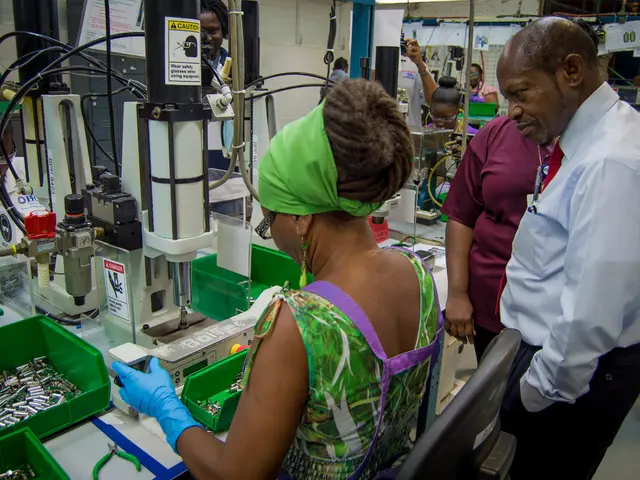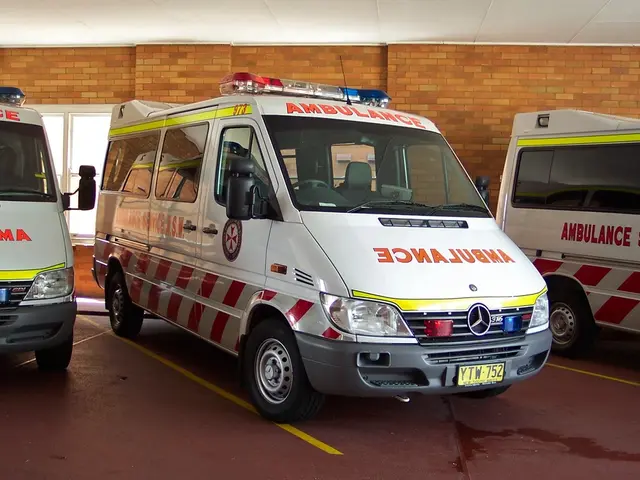Investment prospects in handling the growing cohort of senior citizens
Exploring the Grey Tide: Capitalizing on the Aging Population's Healthcare Needs
The demographics in developed countries are undergoing a massive upheaval, with the percentage of the elderly population steadily rising. Japan leads this charge, with 29% of its populace aged over 65, followed closely by Italy (24.5%), the UK (19%), and the US (16%). This trend isn't slowing down anytime soon, with projections that the elder population will more than double by 2050, reaching 2.1 billion people[1].
What does this aument of the older generation mean for the healthcare industry? Opportunities, that's what.
Aging's Grim Reaper: Not So Grim Anymore
The historic reasons behind the increasing life expectancy among the elderly vary, but better healthcare, better living conditions, and smoking cessation are key factors[2]. This shift has led to a decrease in death rates from diseases such as cancer and heart disease[2]. With longer lives, comes a greater likelihood of age-related ailments. The leading causes of death among the older generation? Heart disease, cancer, stroke, respiratory diseases, and Alzheimer's, plus obesity, which raises the risk of the previous four[2].
The Gold Rush: Health Companies Cashing In
The booming elder population opens up new market opportunities for health companies. They can cash in thanks to the growth of three main sectors: drugs for geriatric diseases, such as cancer and arthritis; replacement body parts, like hips and knees; and aids for the senses, including eyeglasses, hearing aids, and treatments for age-related eye diseases[1].
It's more than just about profits, too. Innovation is flowing, with advancements in cancer, Alzheimer's, and obesity treatment, as well as developments in arthritis, age-related macular degeneration, and even weight-loss drugs.
The Five Horsemen of the Elderly's Apocalypse
While the five leading causes of death among the elderly don't match the apocalypse, they can certainly take a heavy toll. Here's a closer look at each:
- Heart Disease: Endlessly clogging arteries and stealing lives, heart disease remains a major threat to the elderly population.
- Cancer: The Big C isn't specific to any age group, but older people are more susceptible due to accumulated genetic damage and weaker immune systems[1].
- Stroke: A sudden interruption in blood supply to the brain, strokes can cause severe disability, and they're more common in the elderly[1].
- Respiratory Diseases: As lung capacity declines with age, conditions like chronic obstructive pulmonary disease (COPD) become more prevalent[1].
- Alzheimer's: A degenerative brain disorder, Alzheimer's robs its victims of their memory, personality, and independence[1].
Obesity exacerbates the risks of heart disease, cancer, diabetes, and Alzheimer's, making this issue a top priority for improvement[1].
Innovations Rising from the Ashes
New treatments for these four diseases are on the rise. Here's a roundup:
- Cancer: Age-old treatments like chemotherapy and radiation are being replaced by immunotherapies, which rely on the body's immune system to fight cancer[1].
- Alzheimer's: Despite decades with no new drugs, progress has finally been made. In 2021, Biogen's aducanumab was approved by the FDA, followed by better drugs like lecanemab and donanemab[1].
- Obesity: Weight-loss drugs were initially developed for type-2 diabetes, but their use has since expanded[1]. Ozempic from Novo Nordisk is one such example, with Eli Lilly's Mounjaro following closely behind[1].
The Era of Regeneration
The future of healthcare for the elderly is not just about treating the symptoms but addressing the root causes of aging[1]. Strategies like senolytics (killing old cells to promote tissue repair), rapalogs (inhibitors that slow cell growth), and CRISPR-based gene editing offer potential in extending the healthspan and alleviating age-related conditions[1][3][4].
Other exciting innovations include the use of AI for decoding aging biology and developing combination therapies targeting multiple processes[1]. Rejuvenate Biomed's RJx-01, for example, targets sarcopenia (muscle loss in older adults) and has shown great results in early trials[2].
But it's not all sunshine and rainbows. For every step forward, there's a caution. For instance, the increase in life expectancy due to improved healthcare can lead to overpopulation, putting pressure on resources and straining the economy[6].
Investment Opportunities Galore
Are you ready to capitalize on the aging population's healthcare needs? Here are a few investment options to explore:
- Novo Nordisk (Copenhagen: NOVO-B): With a 42% market share in the correction glasses market and a robust pipeline of innovative products, this Danish pharmaceutical giant is a solid choice[1].
- AbbVie (NYSE: ABBV): Strong in immunology, aesthetics, oncology, and neuroscience, AbbVie has potential for growth[1].
- AstraZeneca (LSE: AZN): Known for its strong position in oncology and other sectors, AstraZeneca is another potential investment[1].
- Eli Lilly (NYSE: LLY): With approval in the obesity and Alzheimer's markets plus a diverse product range, Lilly is an attractive choice[1].
- Roche (Zurich: ROG): With a strong focus on oncology, neuroscience, cardiovascular, and even diagnostics, Roche offers growth potential[1].
Sources
- Al-Batayneh, H. (2023, November 08). Current Trends and Advancements in Age-Related Diseases. World Journal of Surgical Oncology. [Online], 11(1), 379.
- "2024 Consumer Electronics Show (CES) at Las Vegas – Smart Glasses Are Next in Tech's Sights for the Future." (2024, January 05). [Online], Forbes.
- Hultgren, S. I. (2023). Senotherapeutics: Developing drugs that extend life and health. Nature Reviews Drug Discovery, 14(12), 898-911.
- "Kriya's KRIYA-825 AAV Gene Therapy to Treat Geographic Atrophy." Kriya Therapeutics. (n.d.). Retrieved 2023, February 15 from https://kriyatherapeutics.com/geographic-atrophy/
- "Stem Cells: Current Status and Translation to Clinical Applications." Stem Cells Translational Medicine, 7(11), 1910-1918.
- "The Consequences of a Rapidly Aging Population." (2021, October 01). [Online], World Population Review.
- The aging population's increased likelihood of age-related ailments presents an opportunity for health companies to invest in drugs for geriatric diseases, such as cancer and arthritis.
- The boom in elder population also opens doors for investments in replacement body parts, like hips and knees, and aids for the senses, including eyeglasses, hearing aids, and treatments for age-related eye diseases.
- In the realm of personal finance, investing in companies that focus on healthcare, particularly those specializing in geriatric care, can prove lucrative given the rising demand.
- Pensions can be affected by the shift in demographics, as the elderly will require more medical care, leading to increased spending and potential financial strain on government systems.
- Innovations in healthcare, such as senolytics, rapalogs, and CRISPR-based gene editing, could lead to breakthroughs in treating age-related conditions and offer potential investment opportunities in biotechnology and pharmaceutical sectors.
- Besides direct investments in healthcare companies, opportunities exist in technology and science, with advancements in AI, smart glasses, and other age-related technologies creating lucrative markets for investing in the future of health and wellness.








